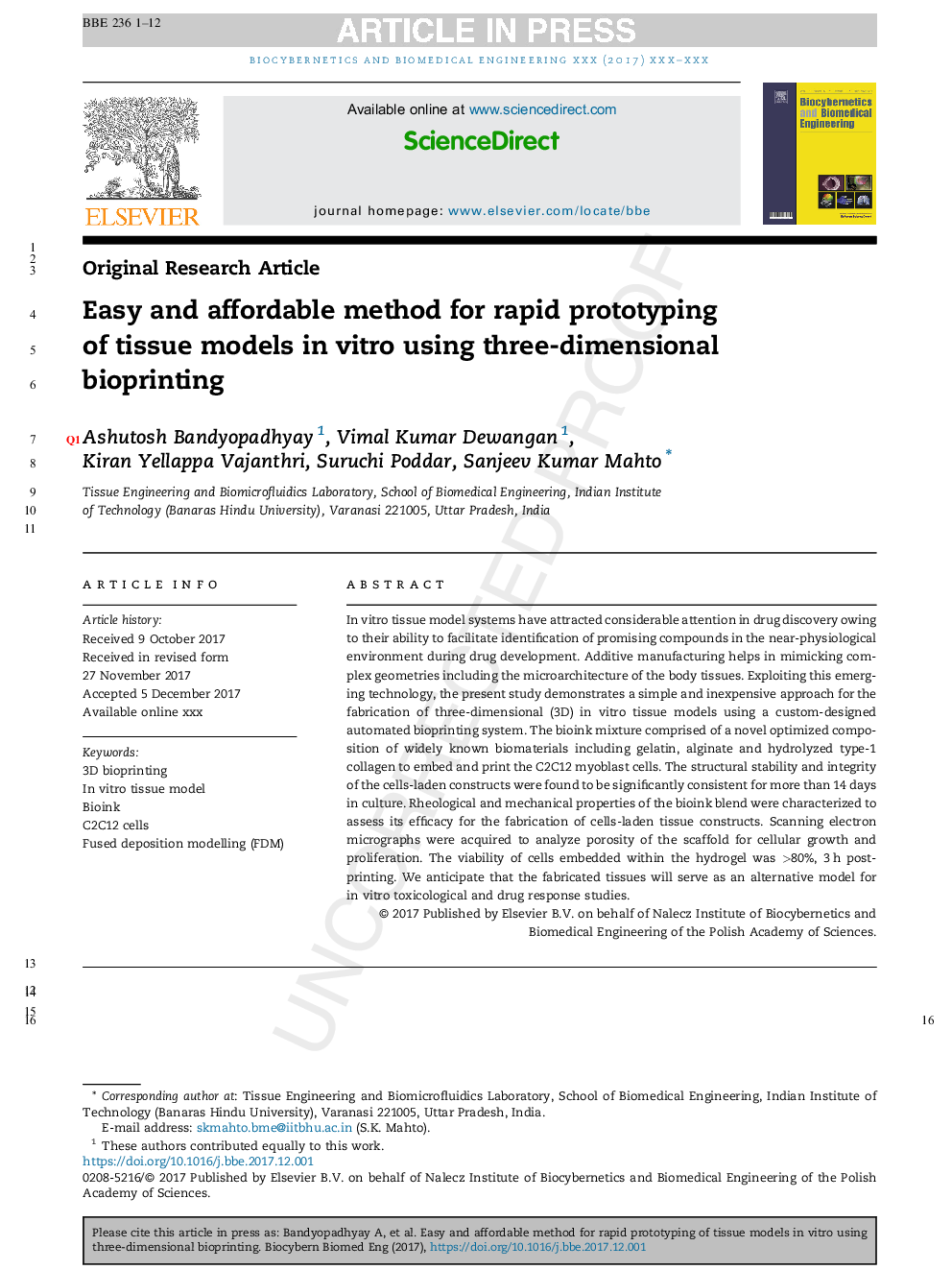| Article ID | Journal | Published Year | Pages | File Type |
|---|---|---|---|---|
| 6484186 | Biocybernetics and Biomedical Engineering | 2018 | 12 Pages |
Abstract
In vitro tissue model systems have attracted considerable attention in drug discovery owing to their ability to facilitate identification of promising compounds in the near-physiological environment during drug development. Additive manufacturing helps in mimicking complex geometries including the microarchitecture of the body tissues. Exploiting this emerging technology, the present study demonstrates a simple and inexpensive approach for the fabrication of three-dimensional (3D) in vitro tissue models using a custom-designed automated bioprinting system. The bioink mixture comprised of a novel optimized composition of widely known biomaterials including gelatin, alginate and hydrolyzed type-1 collagen to embed and print the C2C12 myoblast cells. The structural stability and integrity of the cells-laden constructs were found to be significantly consistent for more than 14 days in culture. Rheological and mechanical properties of the bioink blend were characterized to assess its efficacy for the fabrication of cells-laden tissue constructs. Scanning electron micrographs were acquired to analyze porosity of the scaffold for cellular growth and proliferation. The viability of cells embedded within the hydrogel was >80%, 3Â h post-printing. We anticipate that the fabricated tissues will serve as an alternative model for in vitro toxicological and drug response studies.
Related Topics
Physical Sciences and Engineering
Chemical Engineering
Bioengineering
Authors
Ashutosh Bandyopadhyay, Vimal Kumar Dewangan, Kiran Yellappa Vajanthri, Suruchi Poddar, Sanjeev Kumar Mahto,
